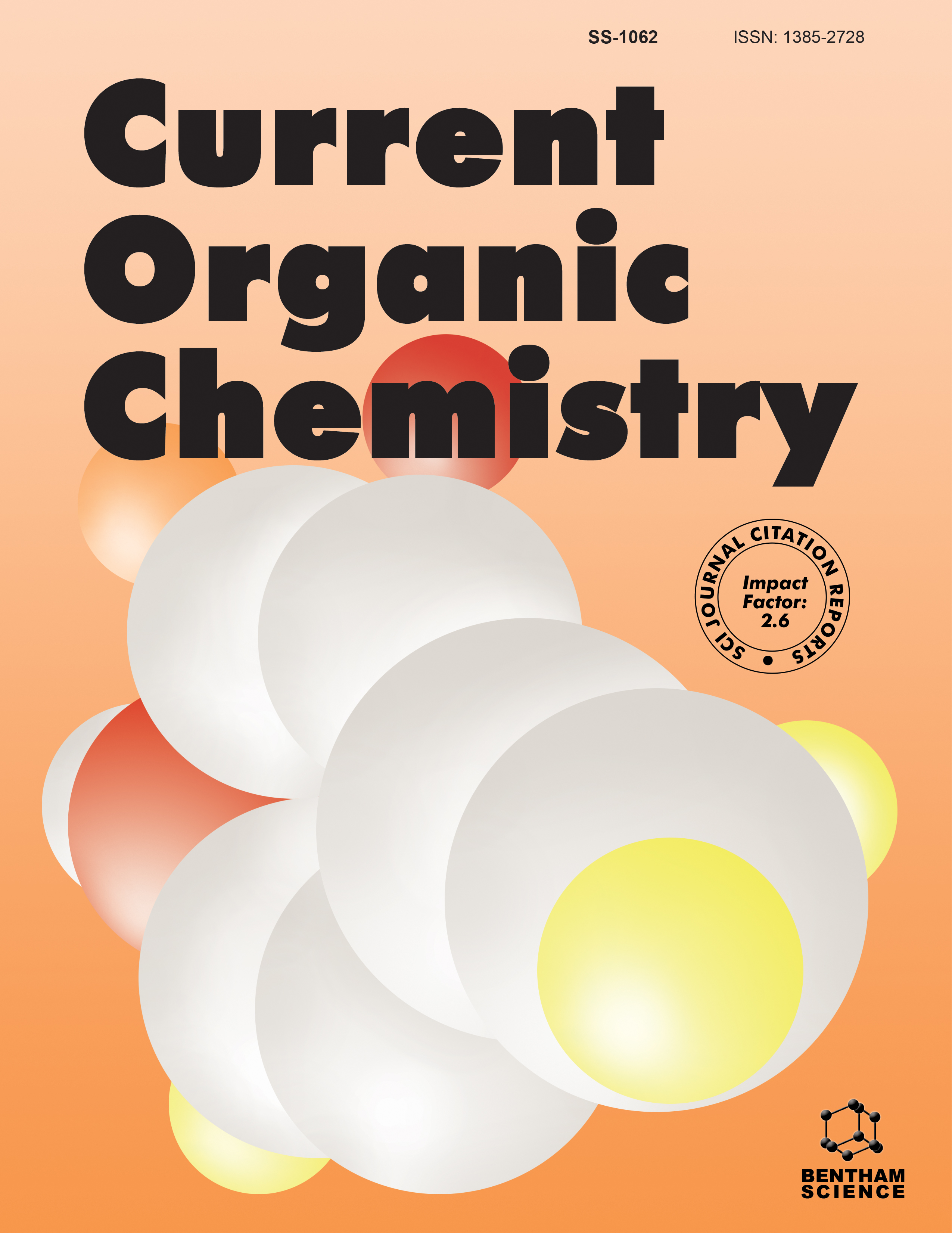- Home
- A-Z Publications
- Current Organic Chemistry
- Previous Issues
- Volume 21, Issue 5, 2017
Current Organic Chemistry - Volume 21, Issue 5, 2017
Volume 21, Issue 5, 2017
-
-
Gracilaria gracilis, Source of Agar: A Short Review
More LessMarine organisms represent an enormous reservoir of compounds with many potential applications. Microbes, vegetals and animals from the sea have been exploited for numerous purposes. From seaweeds, in particular, many active compounds can be obtained, such as three important phycocolloids: agar, carrageenan and algin. In this report, an overview is given about biological characteristics, cultivation, agar and bio Read More
-
-
-
Heavy Metals and Persistent Organic Pollutants in Marine Organisms from Two Sicilian Protected Areas: Strait of Messina and Cape Peloro Lakes
More LessAuthors: Giuseppa Di Bella, Elisabetta Russo and Giacomo DugoThis paper reviews several scientific articles regarding levels of organic and inorganic contaminants in a variety of marine species coming from two Sicilian protected areas: the Strait of Messina and Cape Peloro lakes (Ganzirri and Faro). Moreover, different analytical techniques for the determinations of organic and inorganic contaminants, and the procedures adopted for the analyses, are summarized. Quantitative and Read More
-
-
-
Antarctic Sponge Associated Microbial Chemistry with Biomedical Relevance- the Need for Ecologically Driven Studies
More LessAuthors: Holger H. Buchholz and Katherine R. DuncanSponges are known to be a rich source of structurally diverse bioactive natural products, accounting for approximately one third of the 25,000 novel marine natural products discovered to date. The advancement of molecular techniques, especially next generation sequencing, has revealed a highly diverse and complex microbial consortia associated with sponges. Currently, research is on-going to investigate the role of thes Read More
-
-
-
Potential Use of Proteomics in Shellfish Aquaculture: from Assessment of Environmental Toxicity to Evaluation of Seafood Quality and Safety
More LessAuthors: Tania Gomes, Ambrogina Albergamo, Rosaria Costa, Luigi Mondello and Giacomo DugoA growing percentage of aquatic production worldwide is derived from aquaculture, whose importance is increasing due to commercial overfishing and a rising consumer demand for seafood. This has led to an increased interest in quality improvement and certification of seafood products to guarantee their safety, quality, authenticity, and nutritional benefits. In this context, proteomics has arisen as a promising tool for unrav Read More
-
-
-
Structurally Unprecedented Metabolites from Marine Sponges
More LessAuthors: Elena Ancheeva, Mona El-Neketi, Weiguo Song, Wenhan Lin, Georgios Daletos, Weaam Ebrahim and Peter ProkschMarine sponges represent a prolific and chemically diverse source of secondary metabolites, some of which feature hitherto unprecedented carbon skeletons that continue to attract the interest of natural product researchers. The novel chemistry of these metabolites is often accompanied by exceptional bioactivity profiles suggesting these compounds to be potential leads for drug discovery. In recent years, advances in chrom Read More
-
-
-
Photochromism in Mechanically Interlocked Molecules
More LessAuthors: Fang Hu, Ziyong Li, Xing Li, Jun Yin and Sheng H. LiuMechanically interlocked molecules have attracted the attention of scientists widely. With the functionalization of supramolecular systems novel strategies and approaches were used to construct mechanically interlocked molecules. Currently, the mechanically interlocked molecules have been installed on photochromic molecules to design novel photochromic materials. In the recent years, mechanically interlocked molec Read More
-
-
-
Total Synthesis and Bioactivity of ent-homospisulosine and N,O-diacetylhomoclavaminol A
More LessBackground: Over the past decade, simple 1-deoxysphingoid bases with a saturated hydrocarbon sidechain such as spisulosine, xestoaminol C, 3-epi-xestoaminol C, clavaminol A have attracted considerable attention from synthetic organic chemists because of their impressive cytotoxic/antiproliferative properties as well as the unique structures possessing a variously configured vicinal amino alcohol motif. Resul Read More
-
Volumes & issues
-
Volume 29 (2025)
-
Volume 28 (2024)
-
Volume 27 (2023)
-
Volume 26 (2022)
-
Volume 25 (2021)
-
Volume 24 (2020)
-
Volume 23 (2019)
-
Volume 22 (2018)
-
Volume 21 (2017)
-
Volume 20 (2016)
-
Volume 19 (2015)
-
Volume 18 (2014)
-
Volume 17 (2013)
-
Volume 16 (2012)
-
Volume 15 (2011)
-
Volume 14 (2010)
-
Volume 13 (2009)
-
Volume 12 (2008)
-
Volume 11 (2007)
-
Volume 10 (2006)
-
Volume 9 (2005)
-
Volume 8 (2004)
-
Volume 7 (2003)
-
Volume 6 (2002)
-
Volume 5 (2001)
-
Volume 4 (2000)
Most Read This Month
Article
content/journals/coc
Journal
10
5
false
en


